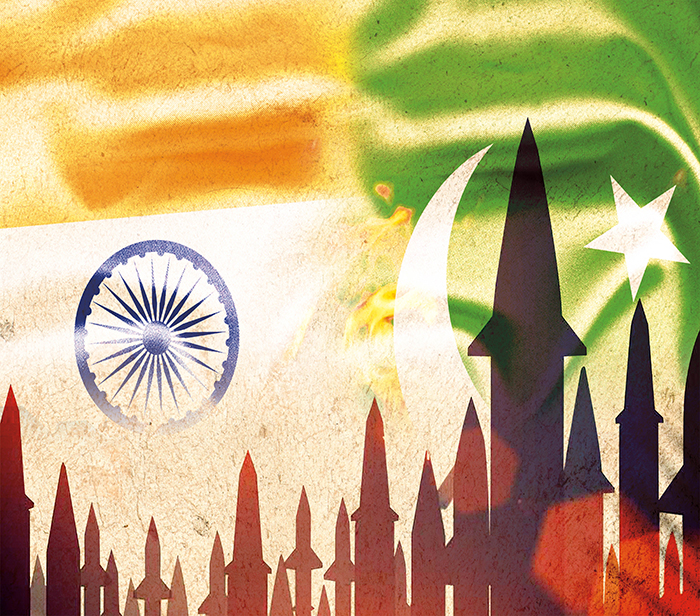
By Sher Bano 7 November 2022
It is nuclear deterrence that forbids hostile states to wage war against each other because of the fear of unacceptable damage in response. In South Asia, nuclear deterrence evolved and emerged as a prevailing condition and not as an articulated policy. Postures and nuclear deterrence policies are emerging in South Asia of events and reactions to each other’s conduct in crisis contexts.
From a pragmatic point of view, deterrence is an evolutionary process that requires assessment and evaluation to adapt to changing dynamics. Stagnation in their adjustment to changing circumstances results in a higher frequency of confrontation, leading to aggression as a means of achieving balance. India-Pakistan deterrence has evolved beyond CMD because both states have mutually transitioned from maintaining a hypothetical threat perception geared towards developing strategic forces to a more dynamic and diversified set of coercions extended to each other. Recently retired Indian officials gave statements in which they said that Indian nuclear doctrine has more flexibility, which subsequently gave birth to debates that India might be shifting from its policy of NFU to options like “escalation dominance” and “splendid first strike.” India has opted for a more offensive forces posture through the extensive military buildup of its forces. These developments also depict India’s departure from the policy of “credible minimum deterrence”, which India adhered to in its Draft Nuclear Doctrine (DND). Initially, Pakistan relied on the policy of “minimum credible deterrence” against India and, unlike its nuclear rival, chose the policy of nuclear first use against any imminent nuclear weapon or conventional threat from India as a last resort. Later on, after the Indian development of Proactive Military Operation, commonly known as CSD, Pakistan changed its deterrence posture to “Full Spectrum Deterrence.” In 2017, in a meeting of NCA, it was reiterated that Pakistan’s policy of FSD is in line with the policy of CSD (Credible Minimum Deterrence).
In this case, the choice of strategic disposition has sufficient confidence in gaining influence in adverse circumstances. This can be visibly assessed by the nature of developments in both states. Pakistan’s willingness to openly pursue a full-spectrum deterrence capability and India’s increased willingness to achieve a practicable ‘nuclear triad’ has been abundantly supporting evidence that both states are willing to transform the nature of nuclear competition as a means of deterring the other. Furthermore, the crises between Pakistan and India have brought to light that both sides draw their conclusions, and based on these conclusions, they change their deterrent postures. The evolution of these changes depicts that deterrence narratives and postures will become more and more contending, which would bring intensity to crises with the ability to slide into full-blown war. Moreover, the 2019 crisis has shown Pakistan that even though FSD covers the gap, there are levels below conventional warfare, which will be exploited in the future. Therefore it is necessary to strengthen its conventional and sub-conventional war-fighting capabilities, which would not only strengthen its conventional forces but also increase the nuclear threshold.
The writer is working as a Research officer at the Strategic Vision Institute (SVI), a non-partisan think-tank based out of Islamabad, Pakistan.
